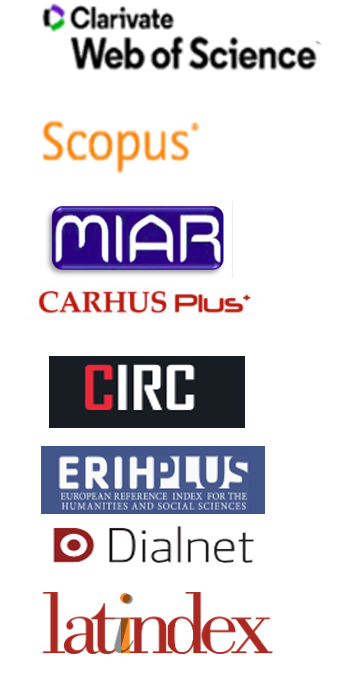Coberturas sostenibles en excavaciones arqueológicas. Metodología de aplicación al caso de mosaicos en el Conjunto Arqueológico de Itálica (Santiponce, Sevilla)
Abstract
One of the challenges of the archaeological work is to prevent or reduce the effects of the "excavation trauma", where the accelerated changes of hygrothermal conditions together with the effect of solar radiation, alter the equilibrium conditions of the buried object. This leads to the need for a coverage during excavation of archaeological sites which is most often performed by fixed or removable systems that come from the productive or industrial world. They have high ecological footprint and limited impact, and ensure, mostly, only shady situations. But we understand that it is possible to provide a global solution from architecture to the numerous requirements of the excavated object, such as: covering systems with minimal supports, light covers highly adaptable to excavation changes, limited budget, or the control of hygrothermal conditions of the covered space through clean procedures that minimize environmental impact.
Downloads
References
AA.VV. (2008). Deplorable Emergency System. La Coruña: Netbiblo S.L.
AA.VV. (2003). Taller de Conservación Preventiva en Excavaciones Arqueológicas in Situ. Cádiz: Instituto Andaluz de Patrimonio Histórico, Colegio Oficial de Doctores y Licenciados en Filosofía y Letras de Cádiz.
ASDRUBALI, F., et al. (2017), “Abrevies of Structure, Termo-Physical. Acoustic, and Environmental Propperties of Wooden Materials for Buiding Applications”, Building and Environment, 114: 307-332.
BAGLIONI, R., CACACE, C., VALPUESTA, S. (2018). “Diseño y Evaluación de una Metodología de Estudio y Gestión Medioambiental de Bienes Culturales”. En VI Congreso GE IIC, Vitoria-Gasteiz: Grupo Español del IIC: 198-205.
CARRERA, F. (2018). “Conservación Preventiva en Yacimientos Arqueológicos, ¿Empezamos?”. En VI Congreso GE IIC, Vitoria-Gasteiz: Grupo Español del IIC: 376-384.
CHACÓN, E. (2010). “Notas sobre FreeFem++2D y 3D: traducción del manual de F. Hecht, en Departamento de Ecuaciones Diferenciales y Análisis Numérico, Facultad de Matemáticas, Universidad de Sevilla. http://freefem.org/ff++/ftp/freefem++Spanish.pdf
DÍAZ MARTÍNEZ, S. (2005). “La Conservación de los Yacimientos Arqueológicos In Situ”, Boletín Arkeolan, 13: 110-130.
EVANS, B. (2007). Arduino Programming Notebbok. San Francisco: Creative Commons.
FRAZZI, P. (2002). “Conservación preventiva para objetos arqueológicos históricos en contextos urbanos”, Estudios Ibero Americanos de la Universidad Pontificia de Rio Grande do S, 26 vol XXVIII: 95-111.
FRISCHKNECHT, R., JUNGBLUTH, N., HANS-JÖRG, A., et. al. (2017). Implementación of life cycle impacto assessment métodos: data v2.0. Dübendorf: Rolf Frischknecht, Niels Jungbluth.
GALÁN MARÍN, C., RIVERA GÓMEZ, C., GARCÍA MARTÍNEZ A. (2015). “Embodied Energy on convencional load-Bea ring salles versus natural stabilized e Art ha blocs”, Energy and Building, 97: 146-154.
GARCÍA MARTÍNEZ, A. (2010). Análisis de Ciclo de Vida (ACV) de edificios. Propuesta metodológica para la elaboración de Declaraciones Ambientales de Viviendas en Andalucía. Sevilla: Universidad de Sevilla.
GÓMEZ DE CÓZAR, J. C., GARCÍA DIÉGUEZ, R. (2001). Sistema Florín. Estructuras Desplegables de Dos Capas. Sevilla: DCA1 Universidad de Sevilla.
GÓMEZ DE CÓZAR, J. C. (2007). “Textile Architecture?”. En III International Conference on Textile Composites and Inflatable Structures, Barcelona: International Centre for Numerical Methods in Engineering: 293-296.
GÓMEZ DE CÓZAR, J. C., GARCÍA MARTÍNEZ A., ARIZA LÓPEZ, I., et. al. (2017). “Lightweight and Quickly Assembled: the Most Eco-Efficient Model for Architecture”, International Journal of Computational Methods and Experimental Measurements, Vol. 5. Núm. 4: 539-550. https://doi.org/10.2495/CMEM-V5-N4-539-550
GÓMEZ DE CÓZAR, J. C., GARCÍA MARTÍNEZ A., ARIZA LÓPEZ, I., et. al. (2019). “Life cycle assessment as a decision-making tool for selecting building systems in heritage intervention: Case study of Roman Theatre in Itálica, Spain”, Journal of Cleaner Production, 206: 27-39. https://doi.org/10.1016/j.jclepro.2018.09.169
JIANG, HE., AKIRA, HOYANO. (2009). “Measurement and simulation of the thermal environment in the built space under a membrane structure”, Building and Environment ,44: 1119-1127. https://doi.org/10.1016/j.buildenv.2008.08.003
KRAUEL, J. (2010). Arquitectura Digital, Innovación y Diseño. Barcelona: S.A. Leading International Key Services
KRONENBURG, R. (2008). Portable architecture: design and technology. Basel: Birkhäuser.
LACAYO, T.E. (2001). “Factores de Alteración in-Situ. Conservación Preventiva del Material Arqueológico”. En XV Simposio de Investigaciones Arqueológicas en Guatemala, Guatemala: J.P. Laporte, H. Escobedo y B. Arroyo: 453-457.
PRICE, S. (1984). La Conservación en Excavaciones Arqueológicas. Roma: ICCROM.
- Copyright and intellectual property belongs to author. Author guarantees editing and publishing rights to Ge-Conservación Journal, under a Creative Commons Attribution License. This license allows others to share the work with authorship and the original source of publication acknowledgement.
- Articles can be used for scientific and educational purposes but never for commercial use, being sanctioned by law.
- The whole content of the article is author’s responsibility.
- Ge-Conservación Journal and authors may establish additional agreements for non-exclusive distribution of the work version published at the Journal (for example, on institutional repositories or on a book) with acknowledgment of the original publication on this Journal.
- Author is allowed and encouraged to disseminate his works electronically (for example, on institutional repositories or on its own website) after being published on Ge-Conservación Journal. This will contribute for fruitful interchanges as also for wider and earlier citations of the author’s works.
- Author’s personal data will only be used for the Journal purposes and will not be given to others.









